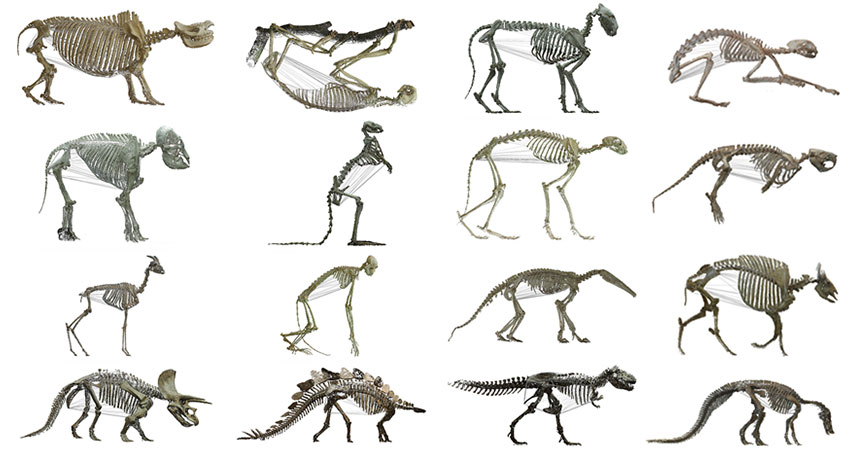Plant-eating mammals sport bigger bellies than meat eaters

These skeletons are spilling their guts about the size of the body cavity that housed these animals’ stomach and intestines.
Using digital 3-D scans of mounted skeletons, researchers estimated the body cavity volume in 126 species. Of the 76 mammal species, plant eaters had bigger bellies; their relative torso volumes were about 1.5 times as large as those of carnivores, researchers report online November 4 in the Journal of Anatomy.
The study is the first to quantitatively test the long-held idea that herbivores have bigger torsos, says Marcus Clauss of the University of Zurich. Plant eaters are thought to need extra space for complex systems that digest a leafy diet.
Surprisingly, Clauss and colleagues didn’t find the same pattern in nonavian dinosaurs, birds or reptiles, but the researchers had fewer skeletons to compare. Of the 27 dinosaurs, for example, only four were carnivores.
Still, the research suggests that in tetrapods — four-limbed vertebrates — only mammalian herbivores have larger body cavities, raising questions about why that might be evolutionarily. “Everybody goes crazy about the long neck or the strange things” on an animal’s head, Clauss says. But few scientists have focused on the torso’s frame and how diet helps sculpt it over time. “This study emphasizes that the torso is an important part of overall body shape.”